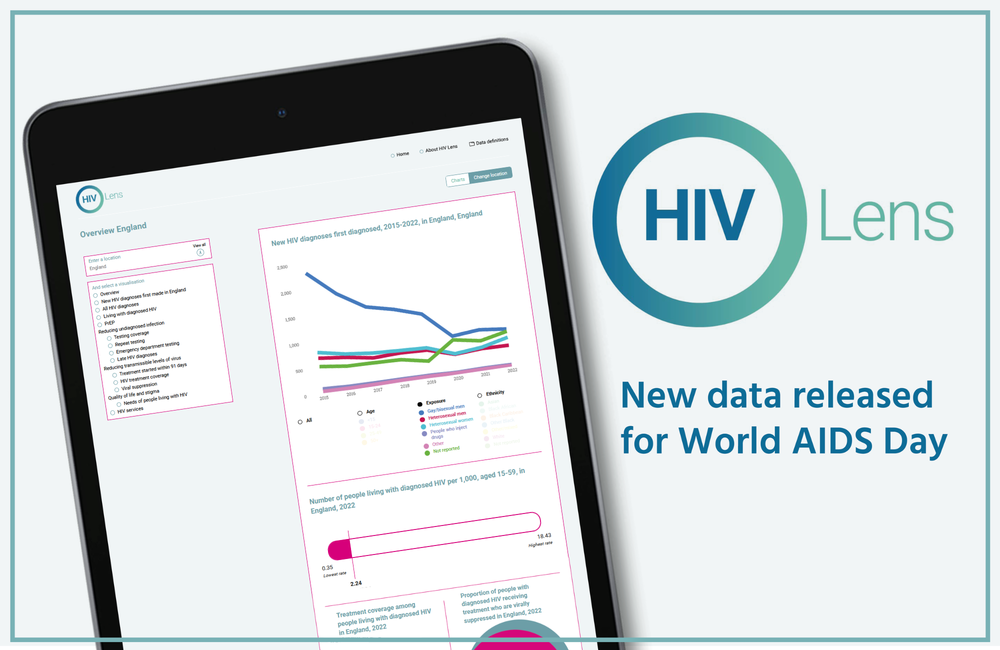
Significant progress – both scientific and societal – has been made in the UK for people living with HIV since the first World AIDS Day, 35 years ago on 1 December 1988. Improvements in medicine and effective treatment now mean that people with HIV can live long and healthy lives, and cannot pass on HIV to sexual partners (‘undetectable equals untransmittable’, or U=U).
But the fight against HIV and AIDS globally and here in the UK has not yet been won. Whilst rates of new HIV diagnoses in England have been declining over the last decade, new diagnoses in England increased last year – rising by 12% in 2022. The demand for pre-exposure prophylaxis (PrEP) among the proportion of HIV-negative people accessing sexual health services in England who were defined as at substantial risk of HIV has also increased from 7.5% in 2021 to 9.7% in 2022. The NHS rollout of opt-out HIV testing in some Emergency Departments has identified hundreds of HIV cases – some from people lost from care and others newly diagnosed.
With the path to curbing new HIV diagnoses yet to be secured, it is imperative that health policymakers, MPs and healthcare professionals understand the current and ongoing challenges facing communities, and are equipped with clear HIV data in order to best support individuals in their regions. This is why, in 2020, aidsmap embarked on the development of an innovative online, easy-to-use and interactive mapping tool alongside Watipa, with data in the public domain produced by the UK Health Security Agency, and funding from Gilead Sciences. The latest HIV data for England have been published on HIV Lens for World AIDS Day.
HIV Lens visualises the impact of the HIV epidemic across England and allows users to access an overview of the HIV data by region, local authority or postcode, or refine their search by using specific criteria for more in-depth insight including rate of new HIV diagnoses, rate of HIV treatment started within 91 days of diagnosis, late diagnoses, and testing coverage. Criteria that have been recently added for publication today include data on HIV stigma, opt-out HIV testing in emergency departments and data on retention in care.
The pioneering and interactive approach of the tool enables users to visualise and compare the stark disparities across regions in the England.
Matthew Hodson, Executive Director of aidsmap, said, “It will be an enormous challenge to meet the 2030 targets of eliminating new HIV cases in the UK. Right now we are not on the right trajectory. However, I still believe that the goal is achievable, but it will require considerable effort and resource to get there. Access to reliable local HIV data helps to track progress and alerts policy makers and communities to where efforts are failing or need to be increased. Tackling the stigma that people with HIV face is crucial to removing barriers to testing and treatment.”
“Opt-out testing in a handful of Emergency Departments has successfully increased diagnoses. Rolling this scheme out to other regions with high HIV prevalence should help reach many more individuals who are unaware of their HIV status”, says Hodson. “Testing and PrEP provision and support need to be increased, but this will only be possible if already overstretched sexual health services are better resourced – and if PrEP is made available in settings, such as GPs and pharmacies, where it will be accessible to more people. We may still be able to end new HIV cases in England but only if we change our current course.”
To explore different HIV data across England or by your region, visit www.hiv-lens.org.
